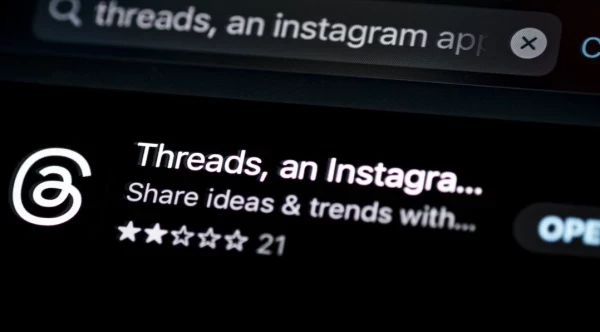Telephone Better Than Social Media for Customer Complaints; But Why?
Add bookmarkMulti-channel is not merely a way of saying "build a presence in new channels." It is not a synonym for a first foray into social media or live chat.
It, instead, is a call to assure your customer experience is integrated--and effective--at every conceivable touch point. It refers to the mindset all customer-centric organizations must adopt: the customer, not the brand, determines where the contact takes place, and the burden is on the brand to deliver a seamless experience in accordance with that customer’s preference.
If the customer wants to call an agent, he should receive a perfect service experience on the phone. If he wants to Tweet a brand representative, he should encounter no struggle or delay in getting his problem resolved. The same goes for chat, e-mail, in-person and every other channel. The customer picks his medium, the brand delivers a quality experience.
That reality—that the customer is the one making the decision—seems lost on a frightening majority of today’s contact center professionals. They are testing the "multi-channel" waters by making preliminary investments into support lanes like social and live chat, but they are doing so out of a blind sense of obligation to trends. They know they need to be "multi-channel," but rather than embracing what that actually means, they rely on pedestrian online customer service preferences to prove it.
Time and time again, reports confirm that brands are not properly supporting customers in social media. Brands themselves confirm that they are very restrictive about offering live chat, and some have gone as far as to say that they actively "tank" e-mail support to discourage users from engaging in that channel.
What is going on? The multi-channel revolution is not about determining how much attention a brand can devote to digital support before feeling inconvenienced. It is not about using new channels as bait to lure customers into the organization’s more traditional support platforms. It is about delivering an experience consistent with what today’s customer wants.
And that is why a key finding from Contact Babel’s new US Contact Center Decision-Makers’ Guideis so perplexing.
The finding—that 73% of contact centers say the telephone support channel offers the best response to customer complaints—epitomizes the disconnect between customer management strategy and the essence of multi-channel.
It reveals that organizations are not embracing multi-channel as a "call to assure your customer experience is integrated--and effective--at every conceivable touch point." Brands provide varying levels of support from channel to channel, and the highest level of support still comes in the traditional telephony channel, even as customers increasingly demandalternative methods of support.
In writing, "We might expect respondents to answer diplomatically that all channels give a similar response, but the reality is – as most customers already know – the telephone channel is still most likely to give the best service," Steve Morrell, the report’s author, underscores how tone-deaf organizations are when it comes to multi-channel.
Consistent multi-channel support should not be mistaken as an idealistic, diplomatic fantasy—it should be recognized as a reality for savvy businesses. Customers do not engage in a live chat or social media discussion expecting lackluster support, and if businesses are truly multi-channel and truly-customer centric, they cannot deliver lackluster support in those channels. That is a statement not of idealism but of irrefutable logic.
Most troubling about the 73% finding is that it comes absent a necessary corollary—that 73% of customers explicitly want superior complaint resolution from telephone communication channels.
Insofar as multi-channel is about creating a touchpoint-agnostic channel that delivers exactly what today’s boundless customer demands, such a wide disparity in performance is only acceptable if it speaks to the market demand. Absent the qualifier that customers not only expect but actually want service effort to skew in favor of the traditional call center, the 73% is an affront to multi-channel customer centricity.
It is a reminder that far too many businesses are acting arbitrarily—or in accordance with their own priorities—rather than in accordance with what matters to the customers. As it is the channel in which they have the most experience, the most infrastructure and most history, it makes sense that status quo priorities would skew in favor of the traditional call center. But status quo priorities do not account for evolutions in customer preference and are therefore incompatible with a customer-centric mindset.
As a simple line of advice to businesses: do not tell me your telephone support is notably superior to that in other channels if your customers do not prefer that it is. If you cannot show that 73% of customers do not believe their inquiries in other channels should be taken seriously, do not so notably skew your customer service efforts.
Very concerning about the Contact Babel finding is that it seems destined to discourage customers from pursuing other support channels.
"Despite the public nature of social media, most contact centers do not believe that this channel does in fact produce a knee-jerk reaction to complaints, with only 5% saying that a customer complaining on social media would get a better response than elsewhere," writes a release accompanying the report, strongly intimating that customers should not assume publicly complaining about a service experience on Twitter is their most valuable course of action.
But why? If customers are taking to Twitter to drive action, it is because they want action. Why is the brand not giving it to them?
Many will turn to findings like this as proof that the call center is not dead and that social media, for all its hype, remains a fringe customer support channel. Unfortunately, without qualifying data about what customers want, one cannot justify that conclusion.
A conclusion he can, however, take seriously is that if his organization’s support strategy does not skew precisely to the demands of the market, his entire business—not just his call center—could be in grave jeopardy.





















